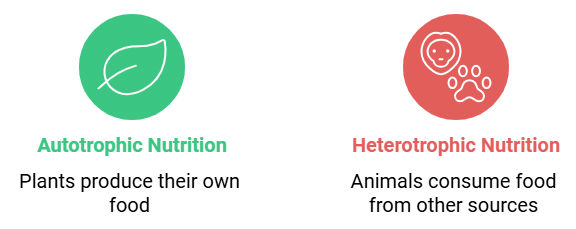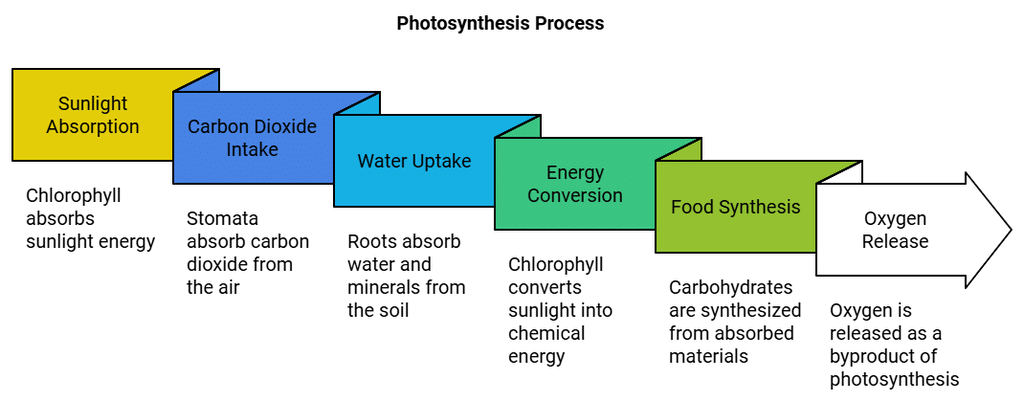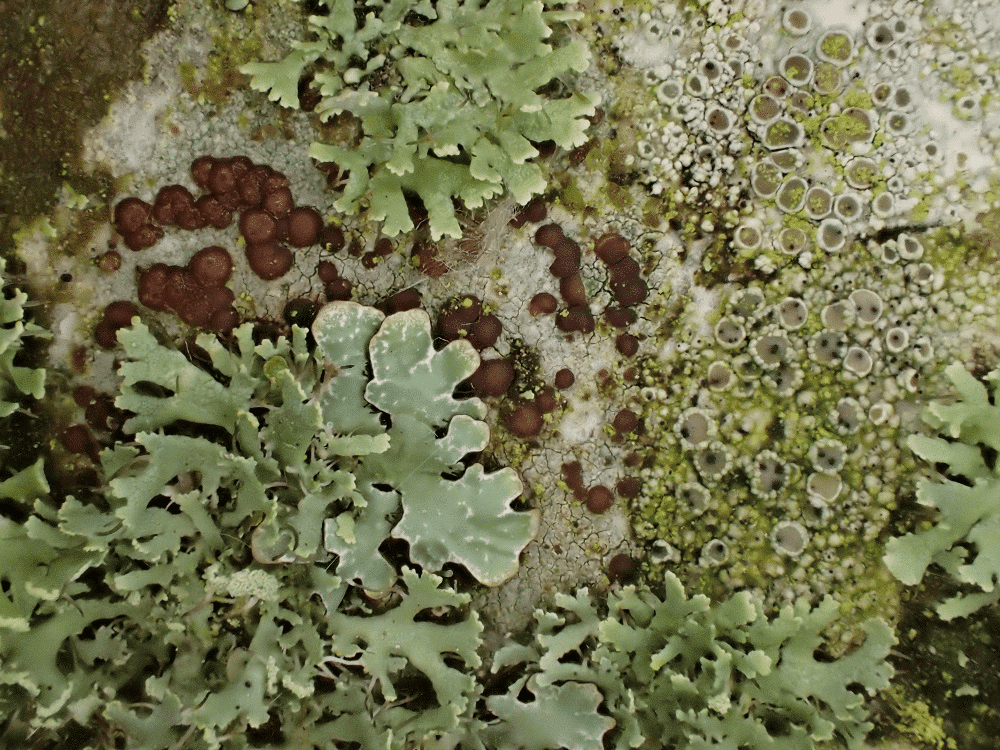Class 7 Exam > Class 7 Notes > Science Class 7 (Old NCERT) > NCERT Summary: Nutrition in Plants
Nutrition in Plants Summary Class 7 NCERT Summary Chapter 1
| Table of contents |

|
| Introduction |

|
| Mode of Nutrition in Plants |

|
| Photosynthesis |

|
| Synthesis of Plant Food Components |

|
| Other Modes of Nutrition in Plants |

|
Introduction
- Carbohydrates, proteins, fats, vitamins and minerals are components of food which are necessary for our body and are called nutrients.
- Nutrition is the mode of taking food by an organism and its utilisation by the body.
Mode of Nutrition in Plants
- Plants prepare their own food by using raw materials like water, carbon dioxide and minerals.
- The mode of nutrition in which organisms make food themselves from simple substances is called autotrophic nutrition.
- Heterotrophic nutrition: Animals and most other organisms rely on consuming food produced by other organisms for their nourishment.

- Plants are autotrophs as they make their own food.
- The autotrophs manufacture their own food, they are called producers.
 Plant Producers
Plant Producers
Photosynthesis
Synthesis of food by plants using carbon dioxide and water in the presence of sunlight with the help of chlorophyll is called Photosynthesis.
- Leaves are the food factories of plants and sites for the synthesis of food.
- The green pigment called chlorophyll is present in leaves.
- Chlorophyll traps solar energy, which is used to prepare food from CO2 and water. Sun is the ultimate source of energy.
- Green plants absorb CO2 from atmosphere through tiny pores called stomata.
- Stomata are present on the surface of leaves.

- Water and minerals are absorbed from soil and are transported to leaves via tiny vessel-like structures present in roots.
- Chlorophyll, sunlight, CO2 and water are essential raw materials for photosynthesis.
- Carbohydrates such as starch and oxygen are the product of photosynthesis.
- Autotroph form the first link in the food chain and all organisms on the earth obtain the energy directly or indirectly from them.
- Plants use sunlight, carbon dioxide, and water to make carbohydrates through photosynthesis, releasing oxygen as a byproduct. The presence of starch in leaves indicates that photosynthesis has occurred. Starch is a type of carbohydrate.
Chlorophyll
- Chlorophyll, the green pigment in leaves, is essential for capturing sunlight energy during photosynthesis.
- The presence of starch in leaves indicates successful photosynthesis, as starch is a carbohydrate produced in the process.
Synthesis of Plant Food Components
- Plants synthesize carbohydrates through photosynthesis and utilize them to produce proteins and fats.
- Nitrogen, obtained from the soil in the form of nitrates, is crucial for protein synthesis. Some plants, like legumes, form symbiotic relationships with nitrogen-fixing bacteria to obtain nitrogen.
- Farmers may use nitrogen-rich fertilizers to supplement soil nitrogen for plant growth.
Other Modes of Nutrition in Plants
- Some plants, like parasites (e.g., Cuscuta), insectivorous plants, and saprotrophs, have alternative modes of nutrition.
- Parasitic plants obtain nutrients from host plants, while insectivorous plants trap and digest insects for nutrients. Saprotrophs, such as fungi, decompose dead organic matter for nutrition.
Symbiosis
- Symbiotic relationships exist between plants and certain fungi (mycorrhizae) or algae (lichens), where both partners benefit.
- Mycorrhizae aid in nutrient absorption for plants, while lichens combine algae's photosynthesis with fungi's nutrient absorption.

Nutrient Replenishment in Soil
- Continuous cultivation depletes soil nutrients, necessitating the replenishment of essential minerals through fertilizers or manure.
- Nitrogen-fixing bacteria like Rhizobium form symbiotic relationships with leguminous plants, converting atmospheric nitrogen into a usable form for plants, reducing the need for nitrogenous fertilizers.
The document Nutrition in Plants Summary Class 7 NCERT Summary Chapter 1 is a part of the Class 7 Course Science Class 7 (Old NCERT).
All you need of Class 7 at this link: Class 7
|
112 videos|286 docs|28 tests
|
FAQs on Nutrition in Plants Summary Class 7 NCERT Summary Chapter 1
| 1. पौधों में पोषण क्या है और यह कैसे होता है? |  |
Ans. पौधों में पोषण वह प्रक्रिया है जिसके द्वारा पौधे अपने लिए आवश्यक पोषक तत्वों को प्राप्त करते हैं। यह मुख्य रूप से प्रकाश संश्लेषण के माध्यम से होता है, जहाँ पौधे सूर्य के प्रकाश, कार्बन डाइऑक्साइड और पानी का उपयोग करके भोजन बनाते हैं।
| 2. प्रकाश संश्लेषण की प्रक्रिया क्या है? |  |
Ans. प्रकाश संश्लेषण एक जैव रासायनिक प्रक्रिया है जिसमें पौधे सूर्य की रोशनी, कार्बन डाइऑक्साइड और पानी का उपयोग करके ग्लूकोज और ऑक्सीजन का उत्पादन करते हैं। यह प्रक्रिया क्लोरोफिल नामक रंगद्रव्य की मदद से होती है, जो पौधों के हरे भागों में पाया जाता है।
| 3. पौधों को कितने प्रकार के पोषक तत्वों की आवश्यकता होती है? |  |
Ans. पौधों को दो मुख्य प्रकार के पोषक तत्वों की आवश्यकता होती है: मैक्रोन्यूट्रिएंट्स (जैसे नाइट्रोजन, फास्फोरस, और पोटैशियम) और माइक्रोन्यूट्रिएंट्स (जैसे आयरन, जिंक, और कॉपर)। ये सभी तत्व पौधों की वृद्धि और विकास के लिए अत्यंत आवश्यक होते हैं।
| 4. पौधे कैसे खनिज तत्व प्राप्त करते हैं? |  |
Ans. पौधे खनिज तत्वों को मिट्टी से अवशोषित करते हैं। उनके जड़ प्रणाली के माध्यम से, पौधे पानी और खनिज तत्वों को ग्रहण करते हैं, जो बाद में पौधे के विभिन्न हिस्सों में पहुँचते हैं और पोषण के लिए आवश्यक होते हैं।
| 5. क्या सभी पौधे प्रकाश संश्लेषण करते हैं? |  |
Ans. नहीं, सभी पौधे प्रकाश संश्लेषण नहीं करते। कुछ पौधे, जैसे परजीवी और मांसाहारी पौधे, अपने पोषण के लिए अन्य जीवों पर निर्भर होते हैं। मांसाहारी पौधे कीड़े या छोटे जानवरों को पकड़कर पोषण प्राप्त करते हैं।
Related Searches





















